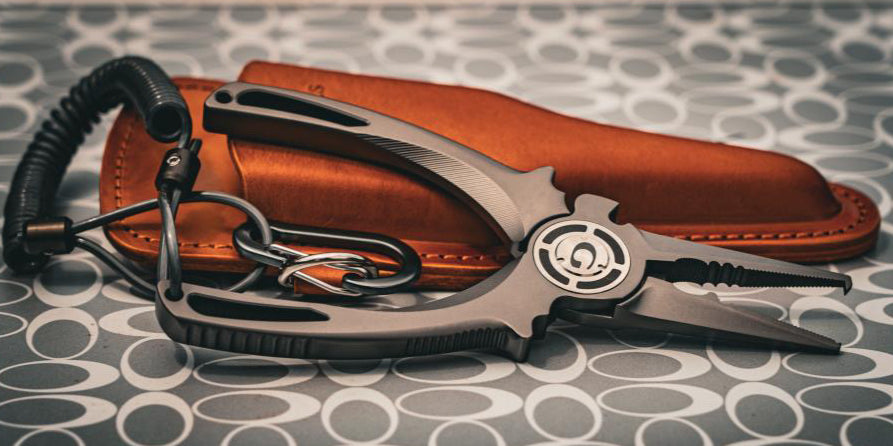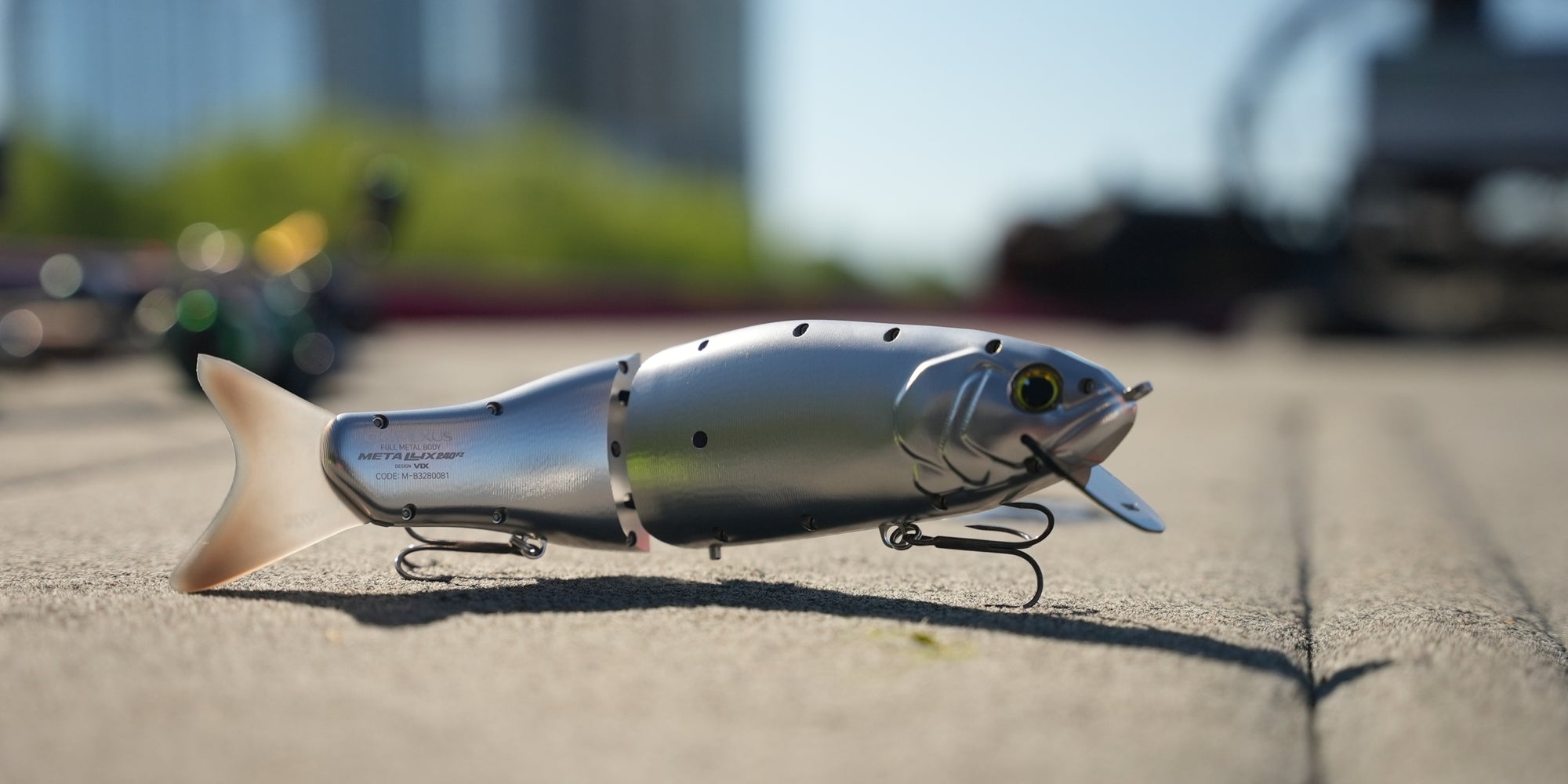Did you just get yourself a Gomexus fishing reel and are now looking for a simple Gomexus saltwater fishing guide? Are you looking for a new hobby that can hook you up to the beauty of nature? If you’re surrounded by saltwater sources, then saltwater fishing is just the right pastime to hook yourself onto. Saltwater fishing comes with unique experiences combining the excitement of the ocean and the thrill of making a catch.
The good thing about fishing is that there are no age or skill level requirements. Whether the saltwater body you’re planning to use is inland or off the seacoast, it’s just the right spot to make some saltwater fish catch. In this Gomexus saltwater fishing guide, we’re going to cover the basics to set you on the right path to mastering the art of saltwater fishing.
We'll cover everything about the right gear, techniques, types of saltwater fish, and the best times to go fishing. Whether you’re getting started with saltwater fishing or you already are a skilled angler looking to spice up your skills, you’re at the right place. So brace yourself for some learning excitement and let's get started!
The Most Common Saltwater Fish
In saltwater fishing, there are plenty of fish species that are easy to come by and catch as a beginner. These fishes often don’t put up much of a fight and can be caught while seated or standing on a pier in backcountry water. Then there are the popular species that require a skilled crew of anglers using the heaviest fishing gear on sea waters.
| No | Saltwater fish name | picture |
| 1 | King salmon |  |
| 2 | Striped bass |  |
| 3 | Pacific halibut |  |
| 4 | Redfish |  |
| 5 | Bluefish |  |
Saltwater Fishing Gear For Beginners
Now that you know a couple of saltwater fishes to expect, you need to prep yourself with the right fishing gear. Saltwater fishing gear is somewhat different from freshwater fishing as it depends on the salinity of the water, the fishing spot, and the time. The better equipped you are, the easier it will be to master the craft of fishing.
Fishing rod
Your choice of the fishing rod needs to strike a balance between sensitivity and strength. The most ideal rod for beginners is the medium-power fishing rod ranging between 6ft and 7ft. Medium power rods offer enough strength to turn a heavy fish like the redfish away from mangroves or rocks.
Fishing reel
When it comes to choosing the reel, spinning reel performs better with beginners since they provide easy handling and are ideal for various fishing situations. Go for a reel that offers an excellent drag system, a solid build, and smooth retrieval.
Make sure the reel is corrosion-resistant ( has sealed gear and drag system). a saltwater fishing reel ranging between 2500 and 3500 and can accumulate up to 200 yards of line capacity.
Fishing line
A braided fishing line makes an excellent choice for saltwater fishing, as it's strong and durable, and can help you fight larger fish in saltwater much better. The braided lines should be 10-15 pounds, combined with about 20-pound fluorocarbon leader material. If you’ll be fishing in saltwater full of rocks, dock pilings, or oyster bars, go for the heavier option of leader material.
Hooks
These are also important saltwater fishing gear for beginners. Choose the 2/0 circle hooks if planning to use 8-10 inch long worms and the 3/0 hooks for soft plastic bass baits. Another important baiting tip is rigging a live bait like shrimp below the popping float to increase the bites.
Apart from being armed with the right saltwater fishing gear, you need suitable clothing to keep you safe, no matter where you’ll be fishing at. Make sure you’ve packed your rain jacket and boots to keep you dry and clean. Breathable saltwater waders come in handy when saltwater temperatures start to rise. Other important gears include a windproof and waterproof hat, polarized sunglasses, sunscreen, and a hat.
The Choice Of Baits For Saltwater Fishing
Choosing a bait mainly entails presenting a bait as food to the fish you want to catch. Before setting for any type of bait, consider the traits of the fish such as sense of sound, scent, and movement. There are two types of baits; live or artificial. Live bait often appears more natural and appealing to the fish, but artificial baits have also been improved to make them more alluring to the fish.
| No | Bait name | picture |
| 1 | Pilchard bait |  |
| 2 | Shrimp |  |
| 3 | Clams |  |
| 4 | Crab |  |
| 5 | Mussels |  |
| 6 | Squid |  |
The Best Beginner Saltwater Fishing Setup
Your first saltwater fishing experience is greatly dependent on your gear setup. Prepping your fishing pole ready for a big catch is among the most challenging bit for new anglers. But after getting a good grasp of how to rig, the roles of each part, and the configurations, the process will be much simpler.
The rig is a combination of swivels, snaps, sinkers, and hooks that are added to the fishing line end. There are different types of setups that you can do depending on where you’re fishing and the fish species you’re targeting. for anglers just getting started, the best saltwater fishing setup is the fish finder rig.
Setting up the Fish Finder Rig
Also known as the Hi-Lo rig, the fish finder rig is ideal for targeting all the saltwater fish species including the flounder, croaker, king salmon, bluefish, and redfish. It comprises two hooks, float, and weight. The hooks are tied at different levels, with one near the bottom and the other near the surface, allowing the angler to cover different depths.
- Gather your equipment. You'll need a fishing rod and reel, a spool of fishing line, a weight, a swivel, two hooks, and a float. The hooks should be of different sizes, with one being larger than the other. The Gomexus Saltwater Trolling Reelhas excellent strength and sensitivity suitable for beginners to catch heavy giant sea fish.
- Tie the weight to the end of the fishing line. The weight can be a sinker or a split shot, depending on the depth and current you will be fishing in.
- Attach a swivel to the end of the line, above the weight. This will prevent the line from twisting when you are reeling in.
- Cut a length of leader material and attach one end to the swivel. This leader should be about 12-24 inches long, depending on the size of the hooks and the bait you will be using.
- Tie the smaller hook to the end of the leader.
- Cut another length of leader material and attach one end to the swivel. This leader should be about 12-24 inches long, and it should be longer than the first leader.
- Tie the larger hook to the end of the second leader.
- Attach a float to the line, above the swivel. The float should be adjusted so that the bait is suspended off the bottom at the desired depth.
- Bait both hooks with appropriate bait for the species you are targeting, such as worms, squid, or baitfish.
- When you’re set to start fishing, cast your rig into the water and allow it to sink to the preferred depth. You can then retrieve the rig slowly and steadily, or you can let it sit in one spot and wait for a bite.
The Best Time Of Day For Saltwater Fishing
When set and ready to take on the fishing adventure, your timing dictates how successful your first experience will be. Generally, fishing early in the morning or late in the evening when the water is calm is the best.
Early morning
Fishing at dawn or early morning is the most suitable for saltwater fishing since most species are feeding actively at that time. since the water is cool, the fish also tend to be more active and will move vigorously.
Early evening or late afternoon
Just at the start of sunset, water temperatures start lowering and this increases the aggressiveness of most fish species. As their productivity enhances, it increases your chances of making a catch without so much hassle.
During tidal movements
As the water tides blow closer to the shore, predatory fish species will be attracted to the baitfish swept to the shoreline. As the water tides retract back into the sea, the baitfish concentration increases and this makes it easier to catch predatory species like the bluefish.
The tidal movements and the weather must also be favorable, otherwise, apart from coming back with nothing, you might also expose yourself to danger.
Shore Saltwater Fishing Tips
Saltwater fishing is a fun sport for its easy accessibility and the little investment needed to get started. Armed with the right fishing rig, know-how, and tips, your first fishing escapade shouldn’t be difficult. So, here are the essential tips that experienced, intermediate, and novice anglers can use to make their day on the shore more productive.
Check your fishing license requirement
Depending on your location, a fishing license might be required. If you’re aware that it’s required, check to ensure your license is up to date if you have one. if not, apply with the relevant local authorities to avoid getting into trouble.
Spot baitfish and birds
Birds often feed on the baitfish, so wherever birds are flying in and out of the water, there’s plenty of baitfish. These are food for the bigger predatory saltwater fish like perch and salmon. Cast your fishing line in such places for a higher probability of making a catch.
Cast your line in dark deep waters
Most large fish species tend to lurk around deeper water areas waiting to attack the baitfish when they swim by.
Watch out for the tides
When tides are moving, that’s when the most delicious fish species are also active. Track when the high and low tides change and start your fishing adventure an hour after or before.
Understand the fish migration patterns
Fish often have migrations during certain periods of the year. Do your homework to know when certain species migrate along the coast of your local area. This is one excellent tip that can make your fishing experience more lovely if you master the migration patterns.
America's Best Saltwater Fishing Spots
Are you planning a fishing adventure and wondering where to get the best saltwater fishing grounds in the US? There are plenty of both offshore and inshore fishing spots that can challenge skilled and new anglers. Check out these 10 saltwater fishing spots in the US:
| No | Saltwater fishing spot |
| 1 | Cape Cod, Massachusetts |
| 2 | Kona, Hawaii |
| 3 | Strait of Juan De Fuca, Seattle, Washington |
| 4 | Chesapeake Bay Junction, Virginia Beach, Virginia |
| 5 | Homer, Alaska |
| 6 | Galveston Bay, Texas |
| 7 | Florida Keys, Florida |
| 8 | Montauk Point Coast, New York |
| 9 | Destin, Florida |
| 10 | Charlestown, South Carolina |
It’s A Wrap!
Saltwater fishing is a rewarding and fun experience, but can also turn out to be intimidating for starters. The best way to make your saltwater fishing more enjoyable is by choosing the right fishing gear, setting up your rig correctly, knowing when to fish, and the behavior of different fish species.
Also, get closer to the local anglers because they understand saltwater fishing much better than any basic Gomexus saltwater fishing guide you could ever find. After spotting your fishing ground, research the specific fish species you need to target and seek advice from local fishermen in the area.




